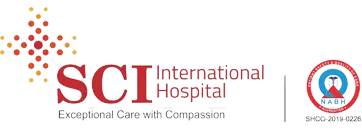Shoulder Injury In Sports | Expert Advice

Shoulder injury is a common occurrence in the world of sports, impacting athletes of all levels and disciplines. Whether it's a sudden trauma or the result of repetitive motion, shoulder injury can significantly hamper an athlete's performance and potentially sideline them from their sport. For athletes, especially those competing at higher levels, a shoulder injury in sports not only affects their current season but also jeopardizes their entire career. In this article, we will delve into the various aspects of shoulder injury in sports, including its causes, symptoms, treatments, and the journey back to play.
Causes of Shoulder Injury in Sports
Shoulder injuries in sports can stem from various causes, including sudden impacts, repetitive motions, overuse, poor technique, and inadequate warm-up or conditioning. Common sports-related shoulder injuries include rotator cuff tears, shoulder dislocations, labral tears, shoulder impingement syndrome, and AC joint sprains.
Signs and Symptoms of Sports Shoulder Injury
Recognizing the signs and symptoms of shoulder pain triggered by an injury is crucial for timely intervention. Athletes may experience pain, swelling, stiffness, weakness, instability, and limited range of motion in the shoulder joint. Ignoring these symptoms can exacerbate the injury and prolong recovery.
Complications of Sports Shoulder Injuries
Untreated or improperly managed shoulder injuries can lead to chronic shoulder pain, reduced mobility, muscle atrophy, joint instability, and even long-term damage to the surrounding tissues. Complications may also arise from delayed diagnosis or inadequate rehabilitation.
Treatment of Shoulder Injury in Sports
1. Non-Surgical Treatment:
When it comes to treating shoulder injury in sports, non-surgical approaches play a vital role in the initial phase of management. The PRICE therapy protocol is often recommended:
- Protection: Utilizing slings, splints, or braces to immobilize the injured shoulder and prevent further damage.
- Rest: Allowing the injured shoulder adequate rest to facilitate the healing process and avoid aggravating the injury.
- Ice: Applying ice packs to reduce pain and inflammation, promoting faster recovery.
- Compression: Using compression wraps to control swelling and provide support to the injured area.
- Elevation: Elevating the affected limb above heart level to minimize swelling and promote fluid drainage. Apart from the management measures falling under the PRICE treatment protocol, some other non-surgical management measures include:
- Physical Therapy: Engaging in targeted exercises and rehabilitation programs to restore strength, flexibility, and function.
- Medications: Prescribing pain relievers, anti-inflammatories, or muscle relaxants to alleviate symptoms and facilitate recovery.
2. Surgical Treatment: In cases where conservative measures fail to yield desired outcomes or for severe injuries, surgical intervention may be necessary. Minimally invasive procedures offer precise solutions with reduced recovery times. Surgical options for shoulder injury in sports include:
- Shoulder Dislocation Surgery: Surgically repairing torn ligaments and labrum through arthroscopic techniques stabilizes the shoulder, reducing recurrent dislocations common in contact sports or falls.
- Shoulder Decompression Surgery: Arthroscopic decompression alleviates impingement by creating space within the shoulder joint, relieving pressure on the rotator cuff tendons, and restoring biomechanics for improved comfort and motion.
- Rotator Cuff Repair: Advanced arthroscopic repair reattaches torn tendons, restoring shoulder integrity for athletes with overhead motion-related tears. Post-operative rehabilitation is vital for optimal recovery and performance.
- Bankart Repair: Arthroscopic restoration of labral anatomy prevents recurrent dislocations associated with Bankart lesions, enabling faster recovery and improved shoulder stability for athletes.
- SLAP Repair: Arthroscopic reattachment of the torn labrum addresses instability and pain in SLAP tears, with emphasis on gradual post-operative rehabilitation to optimize shoulder function and performance.
SCI Hospital - Your Destination for Shoulder Sports Injury Treatment:
When seeking expert care for shoulder injury in sports, SCI Hospital stands out as a premier destination for comprehensive treatment and rehabilitation. Our experienced orthopedic & sports injury doctors specialize in managing a wide range of athletic injuries, providing personalized care tailored to each patient's unique needs. From accurate diagnosis to advanced surgical techniques and rehabilitation programs, SCI Hospital offers state-of-the-art facilities and technologies to ensure optimal outcomes and a speedy return to play.
The Takeaway
In conclusion, shoulder injury in sports can pose significant challenges for athletes, impacting their performance and career aspirations. However, with timely intervention and expert care, athletes can overcome these obstacles and return to their sport stronger than before. At SCI Hospital, we are committed to guiding athletes through every step of their recovery journey, from diagnosis to rehabilitation, ensuring they receive the best possible care. If you or a loved one is dealing with a shoulder injury in sports don't hesitate to reach out to SCI Hospital for specialized treatment and support. Your journey back to peak performance starts here.
Consult Now


